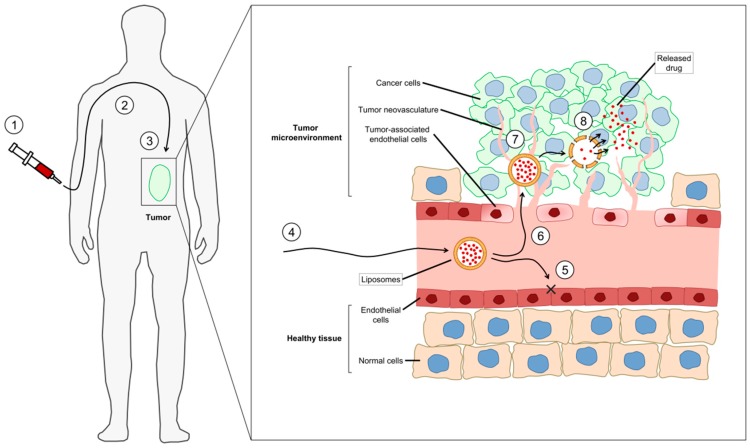Figure 3.
Passive targeting of liposomal formulations by the enhanced permeability and retention (EPR) effect. (1) Liposomes are administered intravenously to cancer patients. (2) They enter the blood flow and remain in circulation for extended periods of time, due to their large particle size and improved pharmacokinetics, while the drug cargo is protected from degradation. (3, 4) Liposomes arrive at the tumour through the blood vessels. (5) They are not able to extravasate to healthy tissue because of the compact endothelial cell layer (×) that forms the capillaries. (6) However, they escape from blood circulation through the enhanced permeability of the tumour neovasculature, which is poorly formed, inflamed and “leaky”. (7) Liposomes are retained in the tumour microenvironment, since the associated lymphatic vessels are impaired. (8) The encapsulated drug is released from the accumulated liposomes into the tumour microenvironment and finally internalised by cancer cells. The arrows show the distribution of the liposomal drug from the intravenous administration to the accumulation and release into the tumour microenvironment.

